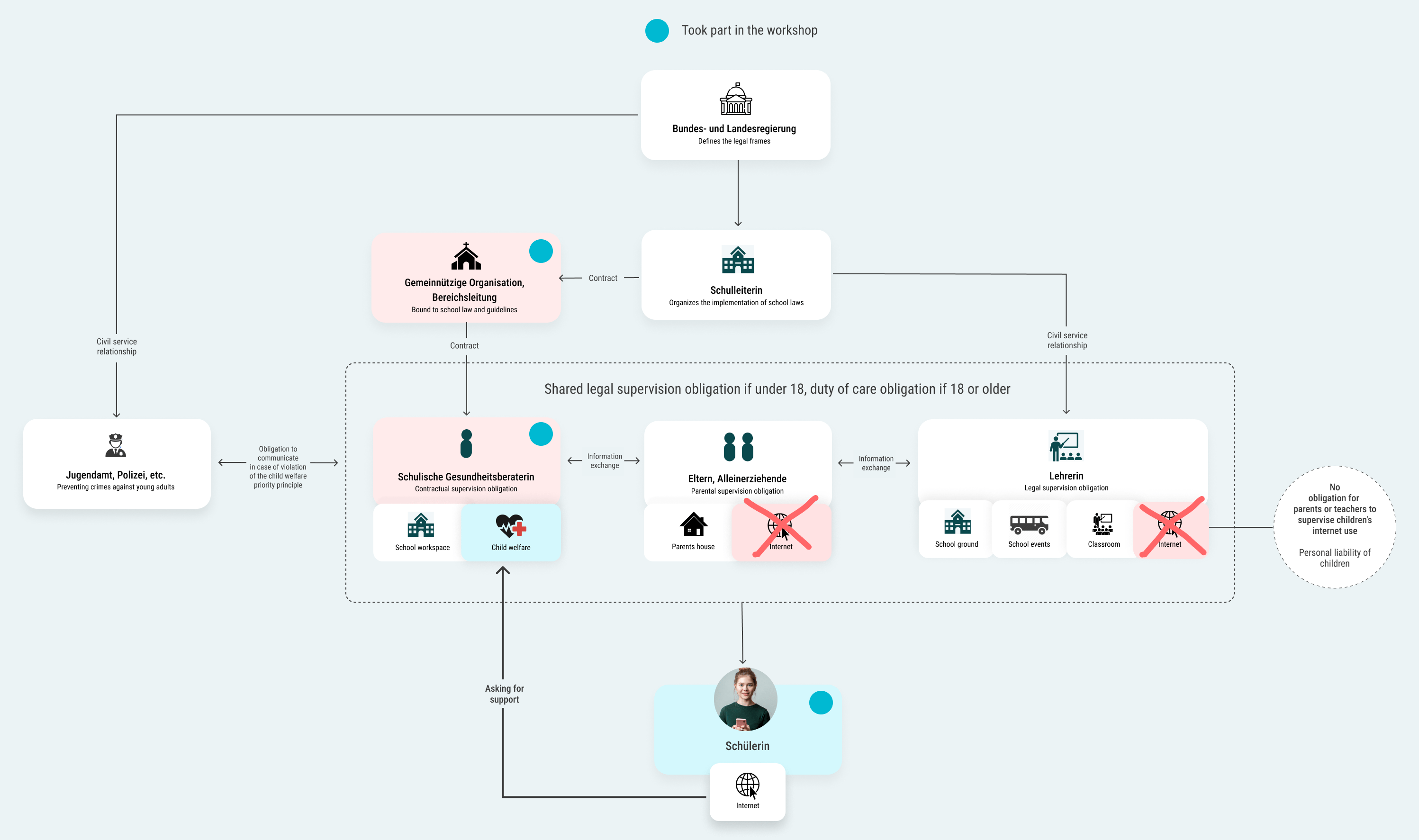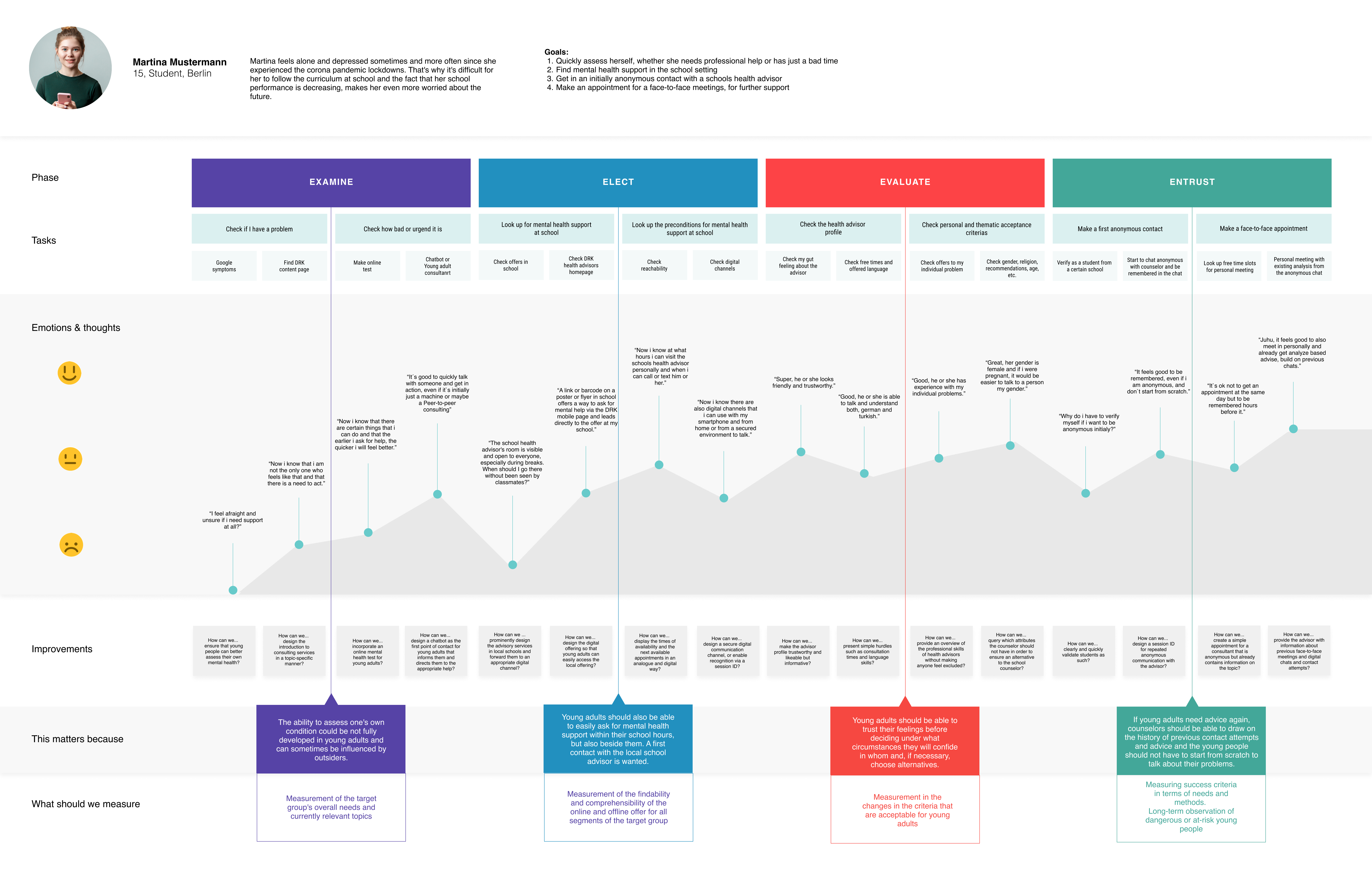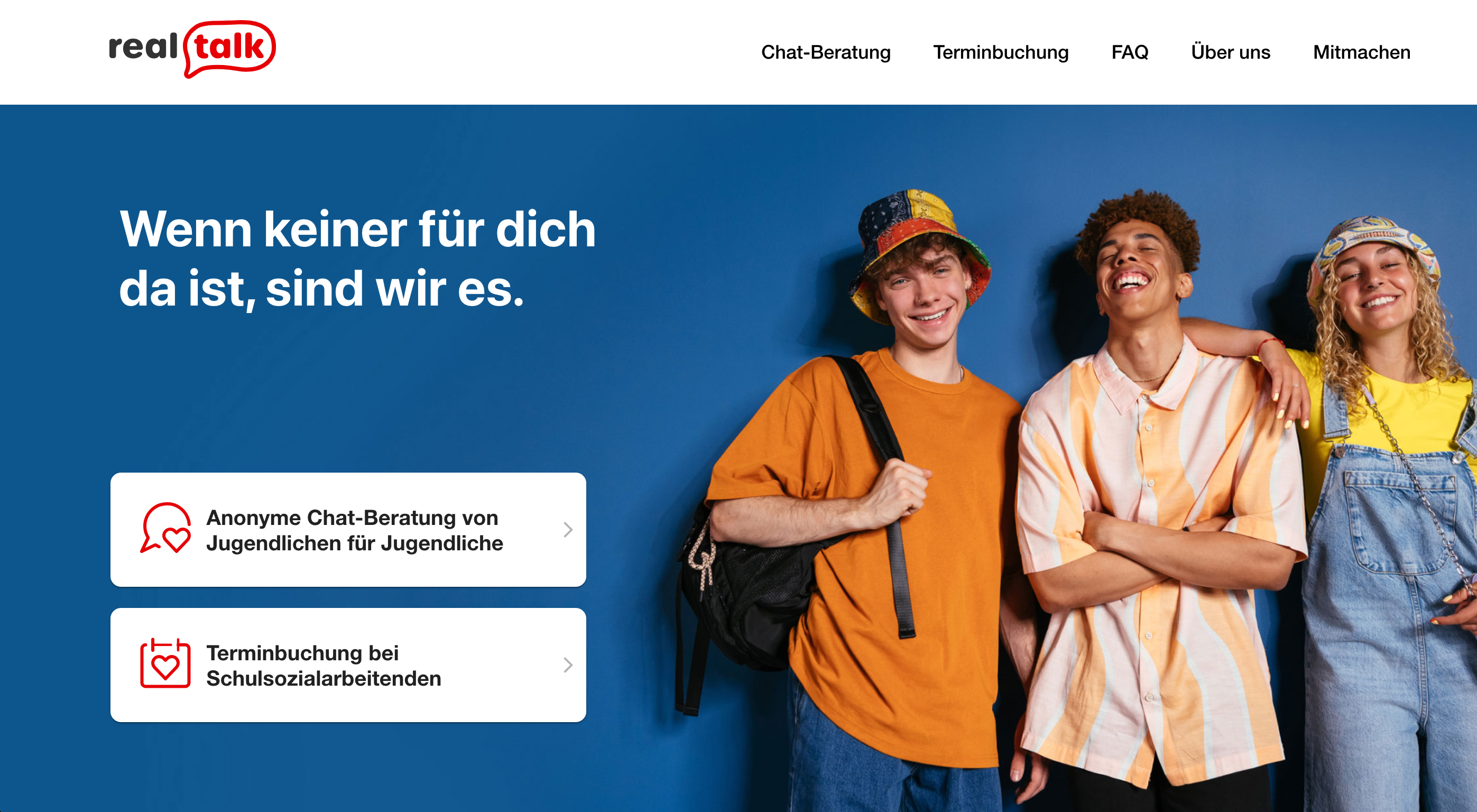DRK – Digital help channel for young adults in a school context
A design sprint about the idea of enabling school kids to reach for help via a digital channel in addition to the already existing support offer at schools and how these could be combined.
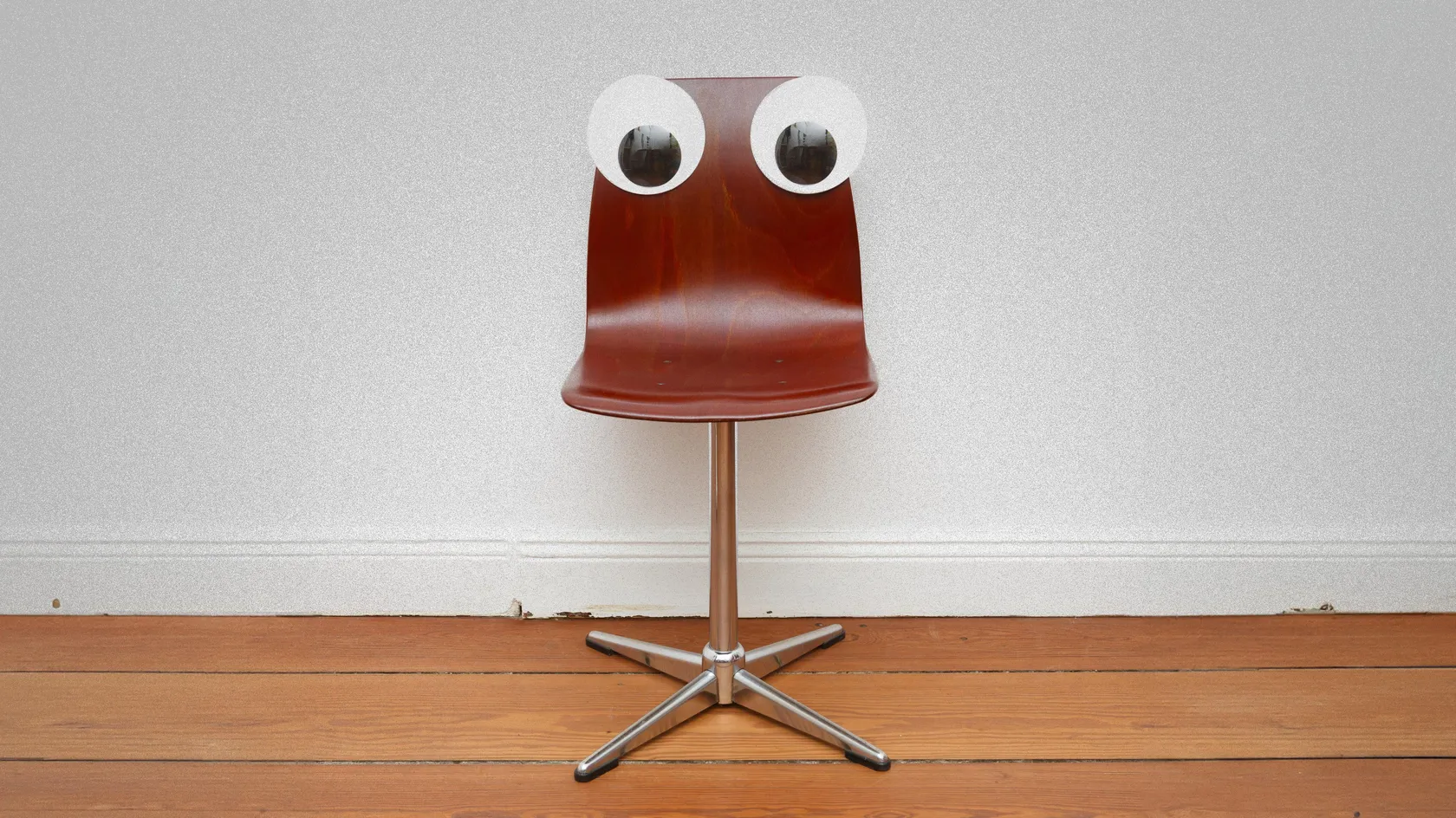
Role and team
Sprint Master (Me), UX Design, Product Owner, 2 School health service managers, 2 Local school health supportes, 4 Young adults
Methods
Design Thinking
User Interviews
User Journey Mapping
Task Analysis
Flowchart
Wireflow
Prototyping
User Tests
Timeline
2022 – 10 Days
Tool Kit
Miro
Paper & Pencil
Figma
Whiteboads
Challenge
In times of overlapping crises, isolation and the extreme conditions for school lessons during the corona pandemic, the responsible advisory services for students at schools have reached their performance limits due to the increased psychological stress. In addition, there are cases and situations in which the responsible advisor is not an option as a confidant.
Design Process
The Design Sprint was a five-day process based on the Design Thinking methodology and focused on considering the user experience and solving specific usability problems within the service, e.g. the question of student authentication, whether chatbots for first comtact make sense and whether peer-to-peer advice goes hand in hand with the demands of a highly trusted brand.
1. Discover
In the discovery phase, we identified the legal preconditions, collected point of view statements in a moderated discussion and used an interview guide to ask further open questions and more in-depth questions in a smaller but safer environment.
Empathize
During the emapthize phase, we identified the main problems of the focus group and structured the insights in clusters, diagrams and tasks.
2. Define
We synthesized the collected and already structured problems into a condensed design hypothesis.
3. Ideate & Test
We ideated new ways to solve the problems and overcome the defined hurdles along the process, using the journey mapping framework. After that, first impressions of the service were scribbled, using the Crazy Eight method.
Sprint planning
A design sprint unfolds its magic through the dynamics that arise over the reduced period of time. In order not to become isolated on individual tasks, strict time planning is relevant for the success of the sprint.

Legal Preconditions
Young adults are obliged to go to school and the school staff are obliged to supervise the young adults during school hours and while they stay on the school ground.
Empathize
What is the problem?
We collected individual problem statements and grouped them according to their content. The content redundancy gave us an overview of how often a problem occurs, but not how intensively it is perceived individually.

Empathize
How big ist the problem?
When asked what is the worst problem for one as an individually, a new problem prioritization emerged. Every participants had three votes to make the decision easier
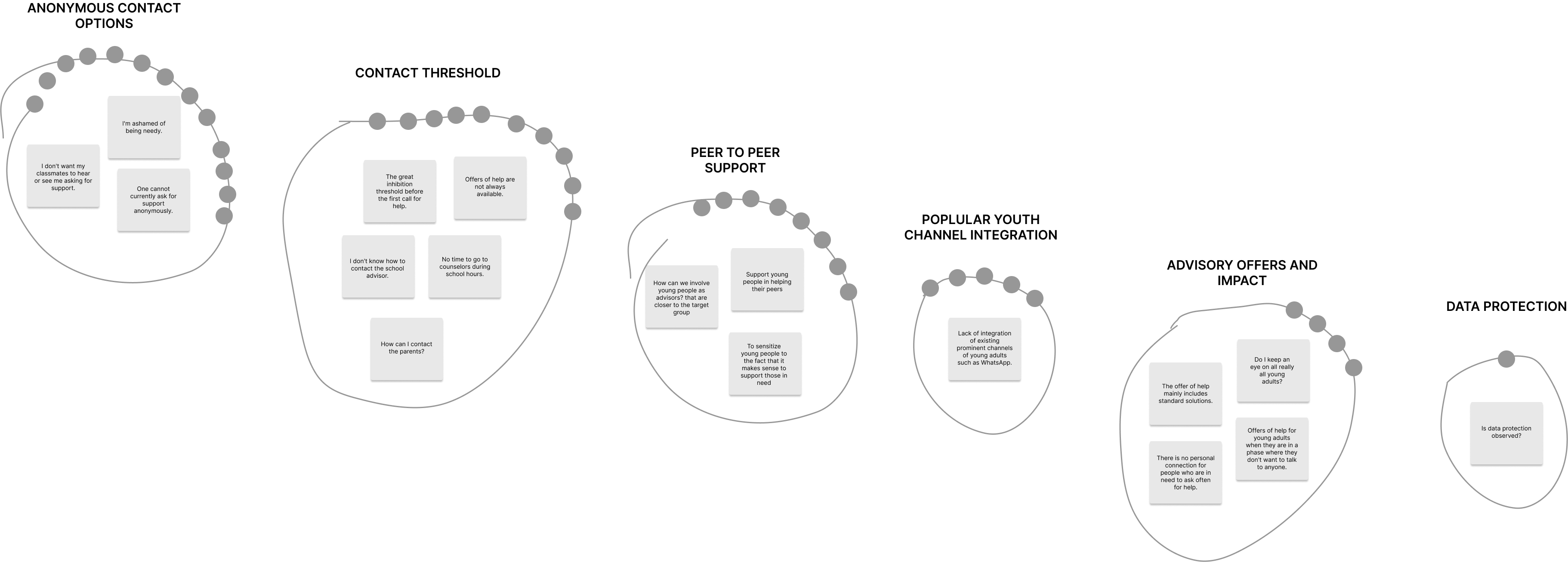
Empathize
What`s important to whom?
While the young adults were the focus group in the workshop and their input was the most important, it was also helpful to survey the young people in a larger group and later consider the focus group’s input in isolation.

Emapthize
Hurdles Hierarchie aka Task Analysis
Because a low-threshold offer was one of the main goals, possible thresholds on the way to an acceptable offer were listed and again provided with problem statements. The service is designed to ensure that the initial technical hurdles eliminate the mental and organizational hurdles or make them easier to overcome.
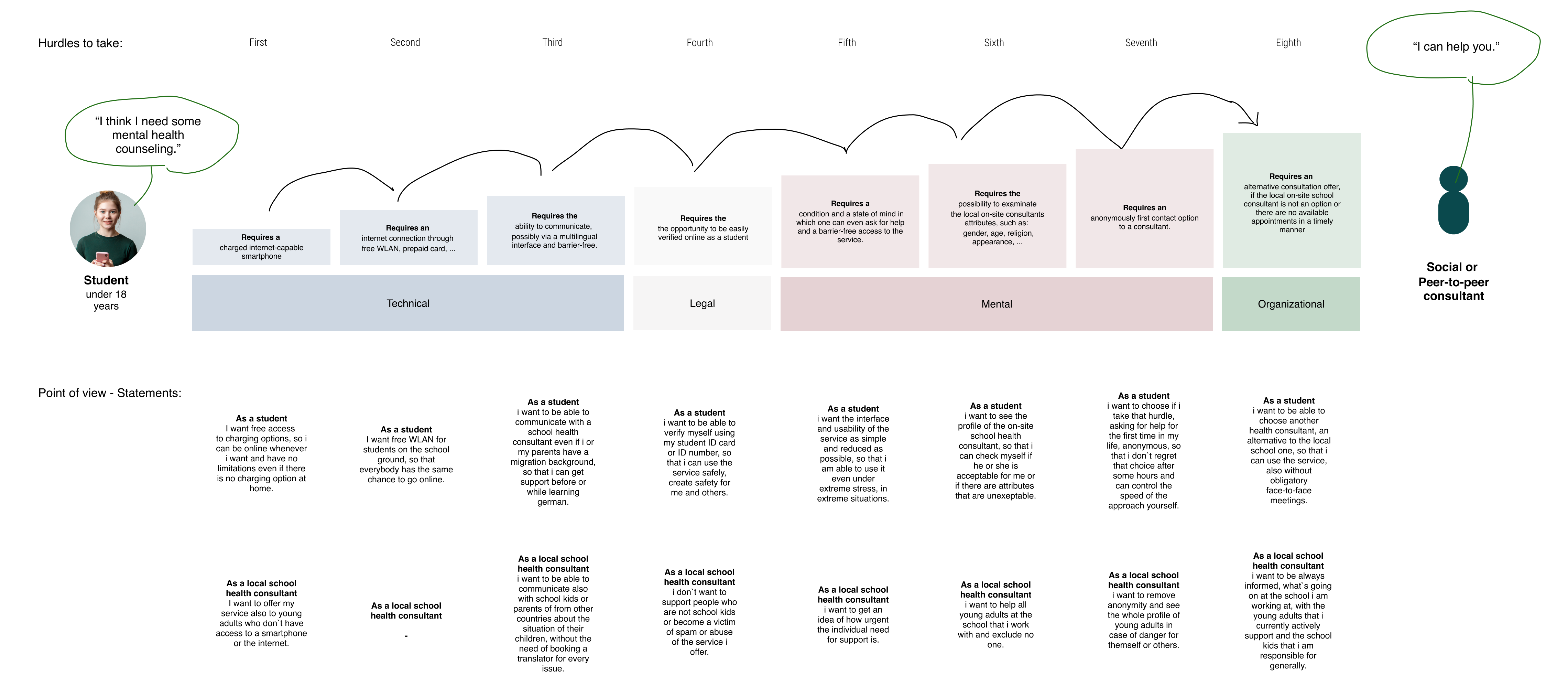
Define
Design Hypothesis
The digital help channel is successful, when it uses the potentials of digitalization and allows young adults to get in an anonymous contact with other young adults or a predefined matching with a socialworker, also outside of school hours and beyond the local offer. The additional technical hurdles should lead to a more efficient and a lower-threshold service.
Ideate
Healthcare User Journey
We brainstormed ideas on how to improve the support and consultation process along the healthcare user journey by asking the group “How can we …“ solve what problem in what phase or step along the journey, from help-seeking till face-to-face support.
Output
Real Talk
The Design Sprint was an initial research project for a new service, which was later realized by the German Red Cross as realtalk.help.
The decision to create a sub-brand in favour of an offer that is still low-threshold is a correct consequence of the workshop findings. An offer such as „Let’s talk“ is more easily accepted by young people than a problem-laden approach that is equivalent to „Go straight to the emergency room“, especially if you have to ask for help for the first time in your life.
The decision to enable a peer-to-peer consulting in a school context for young adults, that is also in respond to the actual current school experience, is a real experience based consulting option for the young adults and can be given in return within the same service, after the overcome of non structural problems.
Learnings
Three key learnings that help me to understand what happend during the Design Sprint and what i would do different next time:
- Focus on users: It is crucial to adapt the idea to the target group and not the other way around.
- Target groups are often different than we think: It was challenging to do a workshop without having a real data background.
- Emotions for the win: The emotional needs for certain target groups are sometimes a big impact for a working concept, more important than a purely functional concept.



